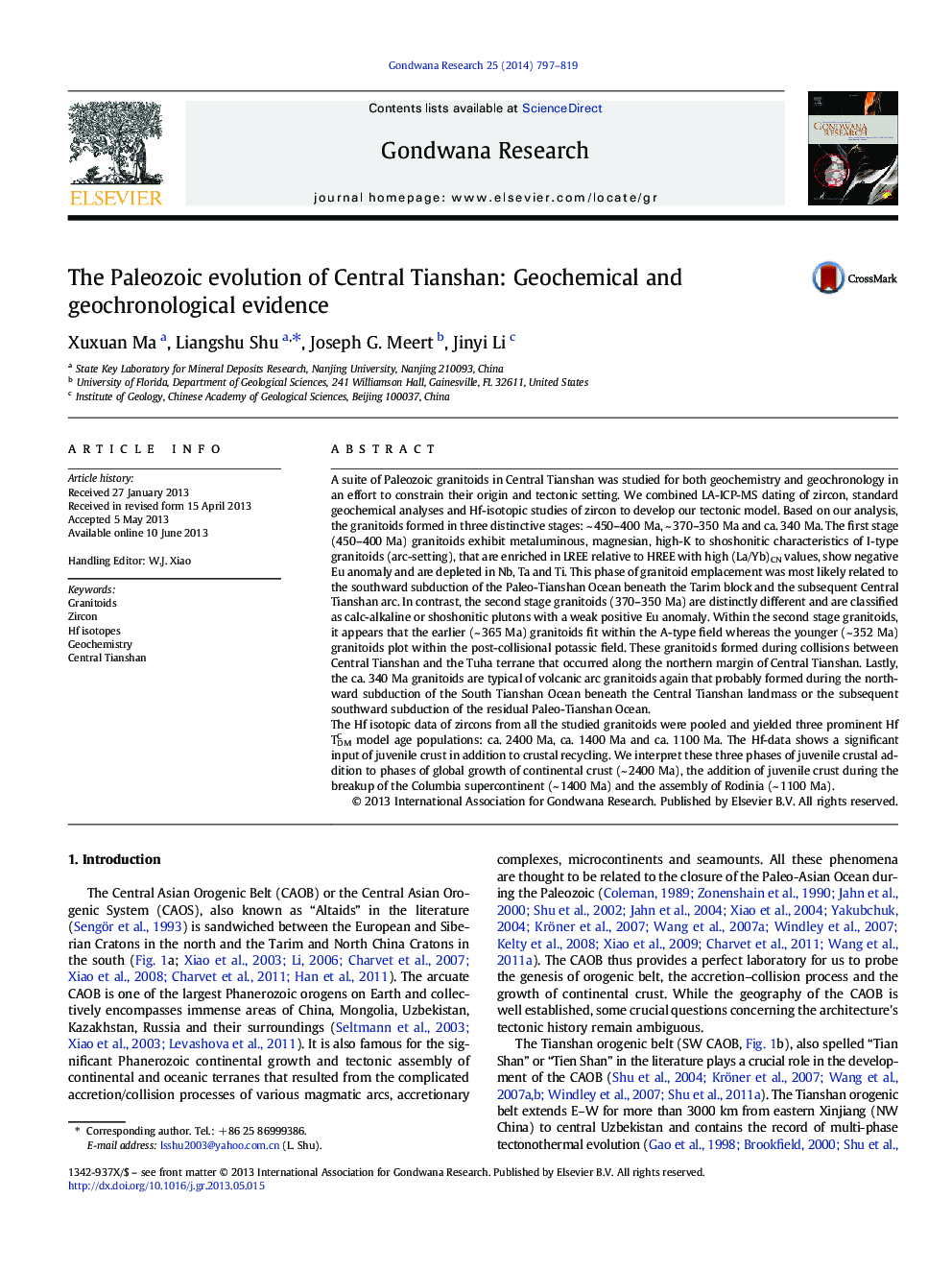| کد مقاله | کد نشریه | سال انتشار | مقاله انگلیسی | نسخه تمام متن |
|---|---|---|---|---|
| 4727102 | 1356360 | 2014 | 23 صفحه PDF | دانلود رایگان |
• The ~ 450–400 Ma granitoids were generated in volcanic arc setting.
• The ~ 370–350 Ma granitoids were formed during collision setting.
• The ca. 340 Ma granitoids are typical of volcanic arc granitoids.
• Juvenile material was generated during the formation of ~ 430–340 Ma granitoids.
• Tentative geodynamic model for the Central Tianshan is delineated.
A suite of Paleozoic granitoids in Central Tianshan was studied for both geochemistry and geochronology in an effort to constrain their origin and tectonic setting. We combined LA-ICP-MS dating of zircon, standard geochemical analyses and Hf-isotopic studies of zircon to develop our tectonic model. Based on our analysis, the granitoids formed in three distinctive stages: ~ 450–400 Ma, ~ 370–350 Ma and ca. 340 Ma. The first stage (450–400 Ma) granitoids exhibit metaluminous, magnesian, high-K to shoshonitic characteristics of I-type granitoids (arc-setting), that are enriched in LREE relative to HREE with high (La/Yb)CN values, show negative Eu anomaly and are depleted in Nb, Ta and Ti. This phase of granitoid emplacement was most likely related to the southward subduction of the Paleo-Tianshan Ocean beneath the Tarim block and the subsequent Central Tianshan arc. In contrast, the second stage granitoids (370–350 Ma) are distinctly different and are classified as calc-alkaline or shoshonitic plutons with a weak positive Eu anomaly. Within the second stage granitoids, it appears that the earlier (~ 365 Ma) granitoids fit within the A-type field whereas the younger (~ 352 Ma) granitoids plot within the post-collisional potassic field. These granitoids formed during collisions between Central Tianshan and the Tuha terrane that occurred along the northern margin of Central Tianshan. Lastly, the ca. 340 Ma granitoids are typical of volcanic arc granitoids again that probably formed during the northward subduction of the South Tianshan Ocean beneath the Central Tianshan landmass or the subsequent southward subduction of the residual Paleo-Tianshan Ocean.The Hf isotopic data of zircons from all the studied granitoids were pooled and yielded three prominent Hf TDMC model age populations: ca. 2400 Ma, ca. 1400 Ma and ca. 1100 Ma. The Hf-data shows a significant input of juvenile crust in addition to crustal recycling. We interpret these three phases of juvenile crustal addition to phases of global growth of continental crust (~ 2400 Ma), the addition of juvenile crust during the breakup of the Columbia supercontinent (~ 1400 Ma) and the assembly of Rodinia (~ 1100 Ma).
Figure optionsDownload as PowerPoint slide
Journal: Gondwana Research - Volume 25, Issue 2, March 2014, Pages 797–819
